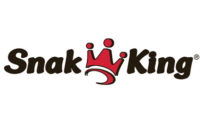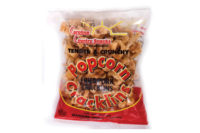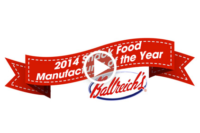
True to its roots, Olde Hearth Bread relies on the art of baking to provide the highest quality, traditional, European-style breads, as well as other innovative products to its customers throughout central Florida.
By Dan Malovany
Old habits die hard, especially for craftsmen like Shannon Talty, who learned the art of baking and how to run a business from some of the best in the food industry.
A graduate of the Culinary Institute of Baking, Talty traveled to San Francisco in the early 1990s to work at Stars restaurant with Jeremiah Tower, one of the nation’s premier chefs, before going to Acme Bread Co., one of the country’s top artisan bakeries, at what was then its new Berkeley, Calif., plant.
“Acme was the ideal place to learn about artisan bread,” Talty recalls. “The bakery was brand new. Most everyone was at an even playing field. They taught me the foundations of proper mixing, shaping, proofing and baking. In my opinion, they are the benchmark of artisan baking.”
After successfully starting up a bakery for an investor in Southern California, Talty returned to his home state of Florida. That’s where he and his father, David, a restaurateur with 40 years of experience, ventured out on their own and started up a hand-crafted, artisan bakery aptly named Olde Hearth Bread Co. in the Orlando area.
Along with their first employee, Janice Brahm, an artisan baker who is now a partner in the business, Olde Hearth Bread has grown over the years - mostly by reputation, word of mouth and providing natural, hand-crafted, fresh-baked breads and rolls to fine restaurants, hotels, caterers, theme parks and upscale grocery stores throughout Orlando and its outlying region.
“Every year, we had steady but not mind-blowing rocketing sales, but just a nice steady incline in sales,” Talty notes.
Three years ago, with the 3,700-sq.-ft. operation busting at the seams, Talty headed to the iba 2006 World of Baking show in Munich, Germany, where he scouted out how the best in Europe automate the production of Old World breads.
“The focus of the last three years has been to buy a building with room to grow, to stay true to our customers and our products, but to implement some automation,” Talty explains. “This involved revisiting and updating our business plan to acquire financing.”
With a strategic plan in place and $2.1 million in secured financing from Small Business Administration, Olde Hearth Bread relocated to its current home in Casselberry, Fla., earlier last year.
“The goals did not change so much as we just wanted to allow ourselves the ability to continue to increase sales, and we had maxed out at the original location,” he adds.
Today, the small but burgeoning, 7,500-sq.-ft. operation houses a semi-automated production line from Europe that’s capable of producing 1,200 loaves an hour.
“Over the last four or five months, we have moved a lot of products over to the new line and are having a lot of success,” Talty says.
However, because the company is unwilling to compromise on quality, automating production of its artisan baked goods was hardly a case of “out with the old and in with the new.” In fact, most breads and rolls still receive a heavy dose of handwork as Talty and Brahm become more comfortable with production on the new line.
“Yes, there’s a learning curve to it,” Talty says. “People that naively think that you can take what you’re making and the next day move it over to this machine - you’ll be sorely mistaken. Like with anything new, there are a lot of adjustments that you have to make.”
Traditionally Innovative
At Olde Hearth Bread, production runs 24/7, 365 days a year because it delivers only fresh-baked products to its customers, some of which never close for the holidays. The bakery produces everything from its top-selling classic French baguettes and authentic Italian ciabatta bread to organic sliced panned bread and an expanding line of croissants and breakfast pastries. The best-selling panned bread is an organic, 9-grain honey loaf made with a natural starter.Overall, the company has 400 to 500 SKUs [stock-keeping units] in its portfolio, but on any given day, the bakery is producing only 80 to 100 varieties of products. Most of them are made from doughs that contain only a handful of natural ingredients and are created using European-inspired starters. In many cases, they’re made from the same basic dough, but formed into a different shape or topped with a variety of seeds, spices, onions and other roasted vegetables that are prepped in house.
“The product dictates the starter,” Talty notes. “We have a lot of recipes that need multiple starters and poulishes.”
During the last couple of years, trendy flatbreads, upscale crackers and super-thin parbaked pizza crusts have flourished and become an increasing large share of Olde Hearth Bread’s volume. Product development and custom designing products are its specialties.
“A lot of it has to do with chefs,” Talty says. “They have an idea of what kind of flavor profile they want. Sometimes, that sends you off on a wild goose chase, but sometimes, you hit on a really good product like our lavash cracker we do now. Some of them are sold in whole sheets, and others are cut into a business-card size.”
Actually, that product concept came from a chain operator who provided the basic formula, and Talty and Brahm, who do the bulk of new product development work, tinkered with Italian seasonings and other flavors until they hit on a few good products.
“Usually, when we get done, we’re nowhere near where the original recipe was,” Talty says. “I would say that’s almost 100% of the time.”
In a market such as Orlando that’s so reliant on tourism, chefs and restaurant owners constantly are searching for innovative breads and rolls that add cache to their menus.
“The trends have been to ‘redesign the wheel so to speak,’” he says. “For chefs, it’s about giving their customers something fresh.”
As a result, there is no shortage of new product opportunities for Talty and Brahm.
“On an average week, and this may shock people, I get four to five opportunities to bring new products to new people,” Talty notes. “That seems pretty good to me.”
However, only a handful of those products actually come to fruition. That’s because Olde Hearth Bread focuses on longer production runs to gain operational efficiencies and maintain its product quality and consistency.
“We generally do five to 10 new products on any given year,” he says. “If anything, I’m trying to cut down on my product list and move toward doing a smaller selection of product, but doing them better and not trying to please everybody.”
In many ways, his business model pays homage to the Acme Bread.
“They made French sourdough, rye and Italian products, and only two or three different shapes of each,” Talty says. “It’s a smart blueprint if you can get away with it. Obviously, it gives you more consistency in the final product, but in the end, you have to reach a balance because you risk turning away a lot of business.”
That’s why Olde Hearth Bread, despite its name, has added an increasing number of pastries to its line over the past year.
“We have been doing croissants, Danish, muffins and scones,” he says. “We have started making more tarts and little crumb cakes, strudel and coffee cakes. We want to introduce some more healthy breads that taste great.”
Keeping Core Values
Creating a combination of Old World, neoclassic and on-trend products requires focus on the fundamentals of baking, Talty says. The company’s link between tradition and innovation, he explains, lies in it being passionate about quality, taking pride in its craft, treating customers with respect and an appreciation of bread as important to people’s health and well-being.Several years ago, Talty recalls, Olde Hearth Bread faced tough times and explored either raising prices or switching from its signature olive oil, for instance, to a more affordable one.
“My father, being in the food industry, said, ‘Absolutely, don’t do that. You can’t back the truck up and get your quality back once you lose it.’ As a result, we have never lowered the quality of any of our ingredients,” he says.
Likewise, he adds, the bakery maintains a laser-like focus when it comes to customer service.
“Whether it’s bringing in a new product or getting my butt chewed, we’ll do anything to keep our customers happy,” he says.
Currently, Olde Hearth Bread is exploring going into the frozen parbaked products segment, but Talty is still weighing the advantages and disadvantages.
“The pros of adding a frozen line are that it will allow us to be able to meet the entire needs of a lot of bigger customers. The ones who need fresh for fine dining and frozen for their casual for fast dining [operations]. It allows you to produce product in down times,” he says. “Cons for us now is the unknown of establishing a system and the learning curve about adjusting our recipes to make a consistent frozen product.”
For now, Olde Heath Bread relies on its small fleet of five trucks, which start delivering fresh product at 4 a.m. and, for some customers, continue throughout the day. Going forward, the company expects to expand distribution to nearby cities in central Florida. However, there are no plans to open a second bakery.
“We mostly stay in areas where we are hitting multiple stops, but we want to grow eventually into Tampa and possibly Daytona,” Talty notes. “We have existing customers who have properties in these areas, but with fuel prices, we need to develop multiple customers before we can drive there.”
For Olde Hearth Bread, old habits die hard, but the company is constantly open to new ideas.
Editor’s Note: Go to www.snackandbakery.com to read more about artisan breads.



